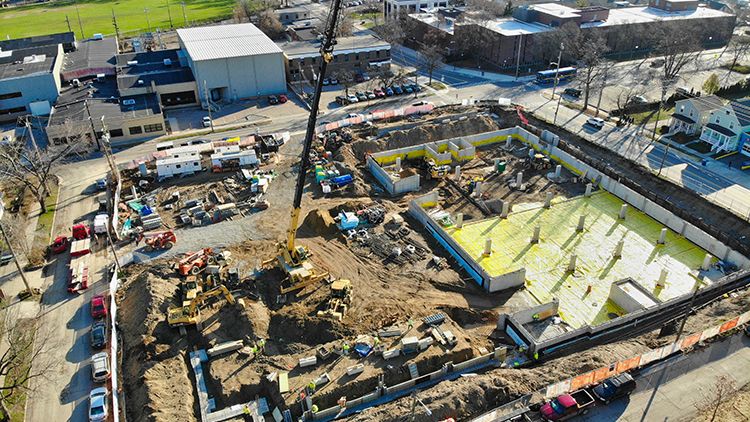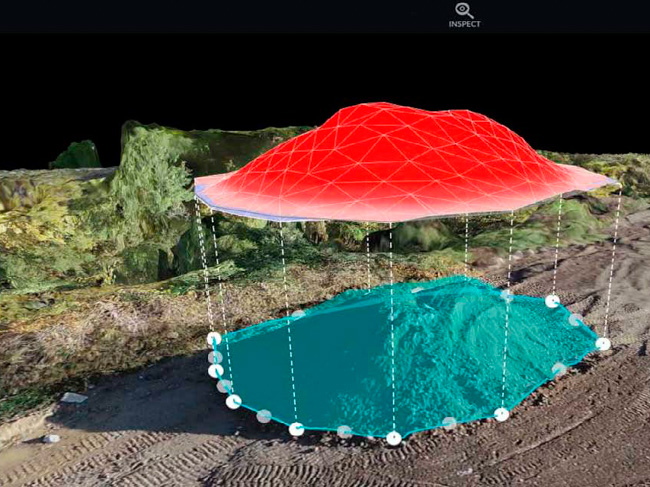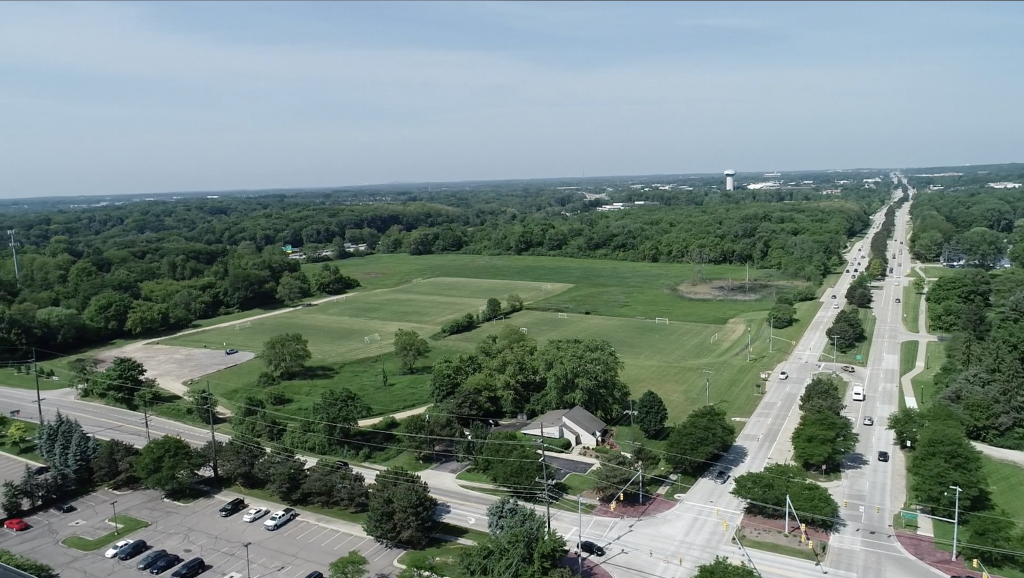With what seems like an endless amount of information and choices that we face every day, I am here to help make your life easier when it comes to implementing a drone program for your company. Once you realize the power that drones offer your job sites as it relates to efficiency, safety, cost savings, progress, data, and more, your next move is simple: find an expert to manage all of your drone operations.
Having been in this space and studying the Construction Industry for over 6 years, it amazes me how many construction companies, big and small, still haven’t integrated a drone strategy to run safer, more efficient and more profitable job sites. Part of the reason for this is that many of the companies we talk to simply didn’t realize just how powerful drone tech is and how it is helping solve problems that were traditionally expensive and time consuming to overcome.
When it comes to your drone strategy, you need to jump in with both feet. There is no time to dip your toe in the drone pool or take a “wait and see” approach. While you might think “revolutionary” to be a slightly strong adjective for drone tech, as you keep reading, you’ll come to realize what we mean.
Those that decide to adapt slowly in the space are going to have a ton of regrets in the next 6-18 months. Why? Because drones solve a lot of problems for job site managers and project leaders. Here are just a few ways they do that.
Site Selection
Save countless time and get a bird’s eye view of the sites you are considering building on. Count trees, capture an elevation view, inspect the site and give your clients views they have never had before. For example, show them what the view from the 3rd floor office suite looks like when facing west.
Documentation & Legal Protection
Map out the roads surrounding the site prior to groundbreaking. This protects your company from any claims from the city, county or state regarding existing road damage.
Capturing Progress Photos
This is typically done when a pilot hand-flies the drone around the site and randomly captures images. Today’s drones and software have automated setting where-by the drone will fly the exact same route every time it flies and documents the site. This gives you a consistent report to share with the owners
Capturing Progress Videos
Same as the photos, above, but video footage is captured.
Mapping
Think of these maps as Google Maps on steroids! You and your team are able to zoom in on any map that is created and see everything on your site in tremendous details. With the map data and the correct software, our technology is also able to deliver cut fill analysis and stockpile volumetric measurements. All within hours rather than weeks using conventional methods.
Communication
Keep all parties up to speed with a bird’s eye of your site – your team, developers, banks, & insurance companies, etc.
Marketing
All of the above assets are outstanding tools to use in all of your marketing and social media. Who does not like watching drone footage!
It is just a matter of time (months… not years), until the owners and developers that you are building for are going to expect drone assets as a standard part of your P.O. You might as well get a jump on this trend and start providing these services as both standard procedure and a differentiating factor from what your competitors are doing.
If drones are so great, why are there still companies holding out? We see the lag in drone adoption in the construction space a function of three primary issues:
- Companies don’t realize the many amazing drone use cases available to them specifically when it comes to managing a job site.
- Most only consider photos and videos and therefore think anyone with a drone could do the job.
- Change isn’t easy.
A little research and anyone can see just how powerful drone tech is in the construction space, so the first point above is a minor one. Additionally, the DIY approach really isn’t cost-effective when you consider the liability (risk), fixed expenses, cost of software, FAA certification, time investment, etc. So the biggest obstacle your construction company faces is figuring out how to integrate drone technology into every job you manage and make the data these drones collect part of the job site workflow.
This is where the sophistication of your drone partner is critical and the size of the provider you work with can be telling. A drone service provider can be a one-person operation that covers a really small geographic area or a 100+ person company with pilots nationwide.
Most smaller providers do not do all things well and tend to treat the business as a sort of side-hustle. Typically, a 1 or 2-person operation does not provide a full menu of services like flying, editing, producing and analyzing maps. Smaller providers are also limited by geography. They cannot cost efficiently (for example) fly a site 2+ hours away. So now you are getting into extra costs of travel expenses, mileage, gas, hotel, etc.
If you chose the route of a drone service provider, make sure you pick one that can do the job no matter where it is. For example, if you’re a national company with jobs across the country, your drone partner should have national reach as well. This allows you to find only one partner, and eliminates the need to manage multiple drone vendor relationships.
After you’ve done your research and have found a great partner for your business, here are the benefits you can expect to get from working with them.
- Liability is on a 3rd parties shoulders. Any good drone service provider carries at least $2M of liability insurance and adds your company on as additional insured.
- No additional people added to your payroll
- Post Production: Most good drone service providers have teams of people on staff; pilots, editors and map makers/analysts.
- Redundancy: Successful drone service providers not only have the latest equipment, they also have multiple aircrafts and pilots. You will never have to worry about not getting a site flown because of a drone being down.
- Trained and Certified: Drone service providers ensure that their pilots are all FAA certified, trained and up to date on the latest technologies
- Nationwide Network of Pilots: No matter where you need a site flown, a good Drone service provider has pilots across the country.
- You only pay for the services you need
I encourage you to start doing your homework. Talk to other people in your industry that are having success using drones on their sites. Remember…sitting on the sidelines and dabbling in the drone space is not an option. Jump in with both feet!
Andrew Wolfe – Pilot in Command (PIC) – Drone Brothers. Helping educated our clients on using the latest drone technologies to achieve a tremendous competitive advantage and saving their companies a ridiculous amount of time and money.




0 Comments